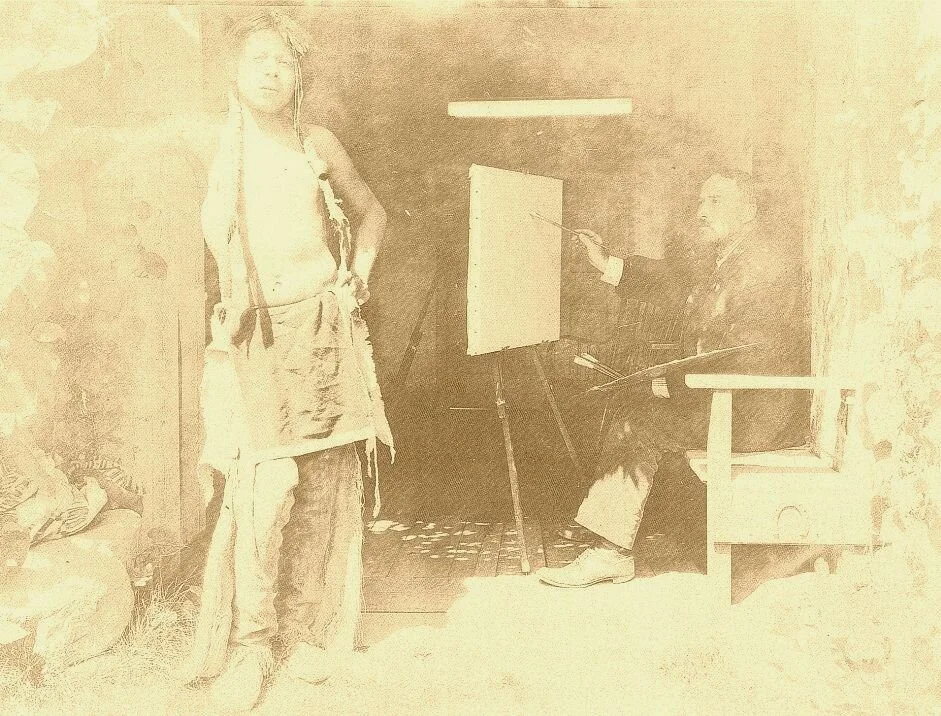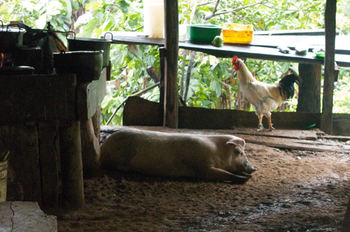The voice on the other end of the phone was exultant. “I’ve found a house exchange on Craig’s list. I’m going to Paris for two weeks. I leave in ten days.”
All in Personal essay
I fell in love with my wife, Rahla, when I realized how much we had in common, including the name George Van Tassel, the grandaddy of UFO-ology.
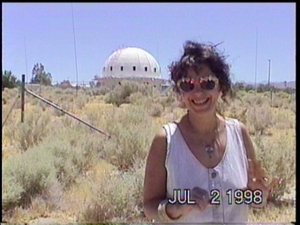
I remembered hearing him interviewed on a radio show about encountering aliens when I was growing up. But Rahla actually met him in the California desert near Twenty-Nine Palms. He showed her an alien landing site, which included a structure he built called The Integratron where aliens rejuvenated after a long interstellar trip; a UFO library and bookstore carved into the earth under the world’s largest freestanding boulder; and a luncheonette. She learned that Van Tassel had been Howard Hughes's partner, and they were going to build a landing strip for Hughes’s giant Spruce Goose fleet -- until the aliens showed up. They named the site Giant Rock Airport in honor of the aforementioned boulder.
Along with our wedding vows in Los Angeles, Rahla and I promised that one day we would visit the Integratron and Giant Rock Airport.
We moved to Scottsdale after the 1994 Northridge earthquake, but were forever driving back to Los Angeles. On one trip, we decided to leave early and fulfill our Van Tassel vow.
Traveling Back Through Time in Taos
Although Starr Interiors, the gallery that I’ve had for decades, has been housed in what was once the home of one of the founding artists of Taos, New Mexico, E.I. Couse, only recently have I gotten entranced with the history of the building. I’ve known about it, but it’s always been in the abstract. My deed was signed under the presidency of Abraham Lincoln, but the building which was originally constructed as a private home, existed long before that. I’d never given much thought to the previous owners and the part they played in the colorful history of Taos.
Since making a connection with Virginia Couse and her husband, Ernie Levitt, who have the Couse Foundation, I’ve become inspired to do some of my own research into this historic building. They’ve been good enough to provide us with some photos when Virginia’s grandfather and his wife, the first Virginia, lived in the house, from 1906-1909, calling it Las Golondrinas. It was there that her grandfather built his studio by opening up the roof and adding on what looked like a greenhouse to provide him with the northern light he needed to paint by.
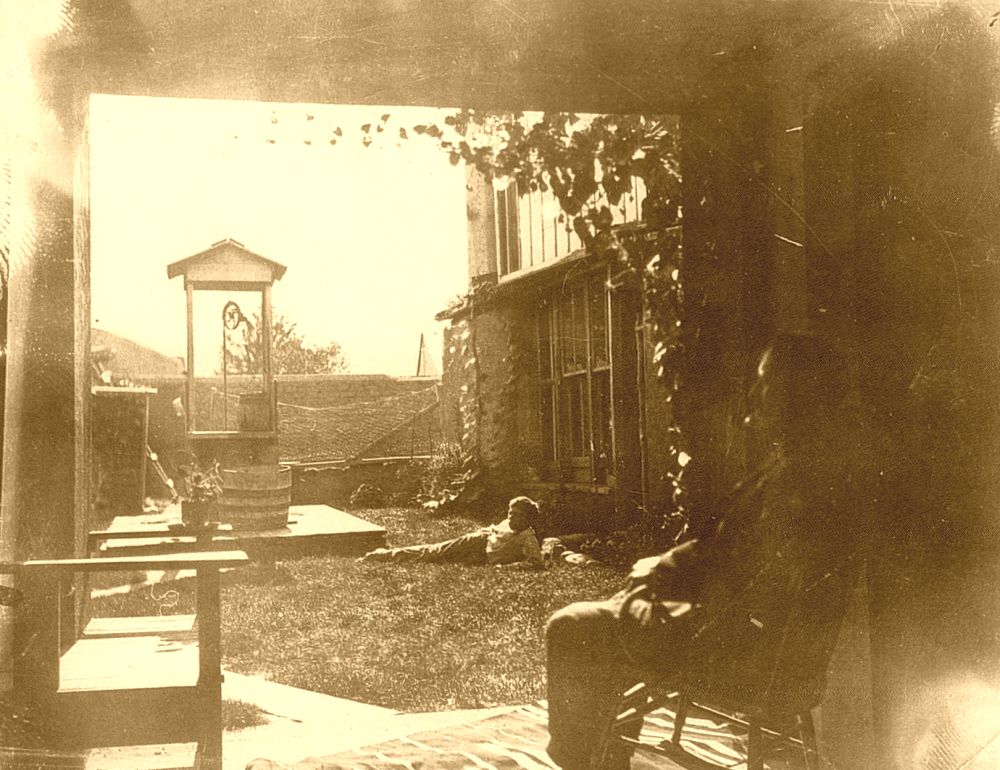
He also often painted in the courtyard. This courtyard was beautiful then, as now, and a photograph caoturs Couse sitting in the doorway at his easel with a handsome young model from the Pueblo standing in front of him. In another, we see him sitting in the courtyard on one of the rocking chairs with his wife stretched out on the grass, hollyhocks and Virginia creepers lining the sides of the courtyard.
by Jim Terr
I had lived in Santa Fe, New Mexico for 23 years before it occurred to me to offer to move back to Las Vegas, New Mexico (the “original” Las Vegas!), 65 miles east, where I was raised, to help care for my mom, aged 92 at the time.
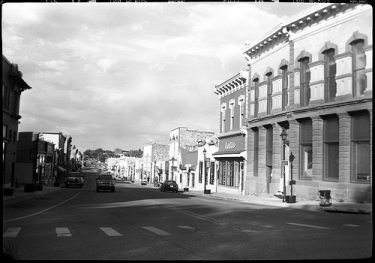 photo by jonnyphoto via flickr.comMy brother had been doing the honors (living with her, in her beautiful red-brick Victorian we were raised in) for a year, and I thought I’d offer to relieve him. My mom couldn’t believe my offer, recalling that a year earlier, when she had asked me if I’d like to move over there, I had responded “I’d rather slit my wrists.”
photo by jonnyphoto via flickr.comMy brother had been doing the honors (living with her, in her beautiful red-brick Victorian we were raised in) for a year, and I thought I’d offer to relieve him. My mom couldn’t believe my offer, recalling that a year earlier, when she had asked me if I’d like to move over there, I had responded “I’d rather slit my wrists.”
My suicidal reluctance had been due to my attitude that Santa Fe was fascinating, culturally alive, hip, filled with beautiful, interesting people and romantic prospects, whereas Las Vegas (population 15,000) was insular, uninteresting, provincial, stagnant.
As I was cleaning up to move out of the place I was living in, my ever-active songwriting mind was generating a beautiful tribute song about Las Vegas, my home town, perhaps as a coping mechanism, a reflection of my deeper excitement about moving back there despite my well-developed bad attitudes about the place.
Now, a little over six months since moving back to Las Vegas, I am able to see more clearly what a tremendous transition was involved in moving back – and in gradually overcoming the horrible attitudes I had developed about my dear little old home town.
by Eric Lucas
“So, how does it feel to be in your homeland?”
My wife, Leslie, looks at me inquisitively.
 Tindari by Leslie ForsbergWe’re visiting Tindari, Sicily, where the Black Madonna of Tindari hangs in a cool-stone basilica on an olive-scrub headland overlooking the Tyrrhenian Sea. Beside the Madonna is an equally ebony Christ hanging on a crucifix. Up the road is a theater used by Greeks and Romans; stone seats persist on a rocky hillside, 2,000 years after they were first set down.
Tindari by Leslie ForsbergWe’re visiting Tindari, Sicily, where the Black Madonna of Tindari hangs in a cool-stone basilica on an olive-scrub headland overlooking the Tyrrhenian Sea. Beside the Madonna is an equally ebony Christ hanging on a crucifix. Up the road is a theater used by Greeks and Romans; stone seats persist on a rocky hillside, 2,000 years after they were first set down.
“She is known as the ‘Black Madonna of the Orient’,” our Sicilian guide, Lita, explains about the sepia-hued sculpture in the basilica’s huge bronze altar. “That means ‘from the east.’ In this case, Byzantium. So many, many people have come through Sicily over the centuries.”
And many have left.
“I’m Sicilian,” I tell Lita. She raises her eyebrows, looks me up and down. I hope I pass inspection: oxhide skin; walnut eyes; bones like the old olive trees nearby. She nods.
“One quarter Sicilian,” I clarify. “My great-grandparents came from a village above Palermo.
by Sylvia Fox
For the past 10 years - more if you include summers - Michael and I have chosen to live what my parents would have called a 'bohemian life' that meant living with limited utilities, limited comfort.
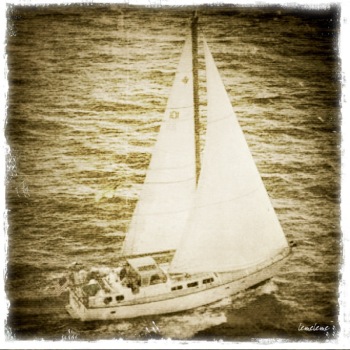
As I wiped a tear away while I said goodbye, my other thought was ‘My turn!’
And off we went --- sailing out under the Golden Gate Bridge, turning left and heading south until the butter started to melt.
But over the last decade, whether we were cruising California and Pacific Mexico aboard our 48' Maple Leaf sailboat, Sabbatical, or living in a home we later built in a rural surf village on a Pacific beach in Mexico or spending summers in our 100-year-old lake cottage in rural upstate New York, we found we had to constantly monitored our usage of what most Americans take for granted: water, sewage, gas, and electric. And garbage.
We had to know what we had, what we used, what we stored because of the lifestyle we had accidentally chosen when we stumbled into our grand adventure.
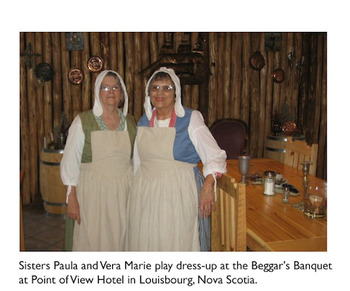 On our first trip together, we covered only a few blocks in a neighborhood of two-story white wooden houses in Columbus Ohio. I was pushing my sister Paula's stroller. (Ask her. She would no doubt say that I was always pushy.) At a few months old, she was oblivious to the great world around us--the bulbous cars parked along the street, the empty lot, dusty in the summer sun, or the brick store buildings up ahead on Cleveland Avenue. I, on the other hand, being ten years older, ten and a half when she was only six months old, I knew about everything.
On our first trip together, we covered only a few blocks in a neighborhood of two-story white wooden houses in Columbus Ohio. I was pushing my sister Paula's stroller. (Ask her. She would no doubt say that I was always pushy.) At a few months old, she was oblivious to the great world around us--the bulbous cars parked along the street, the empty lot, dusty in the summer sun, or the brick store buildings up ahead on Cleveland Avenue. I, on the other hand, being ten years older, ten and a half when she was only six months old, I knew about everything.
As I walked, and she patted her chubby hands together, I daydreamed about how she would grow up with fond memories of her loving big sister and be eternally grateful for my attention and care. (Always about me, wasn't it, Paula?)
These little walks down the block were definitely not the only trips we took as children. Our parents loved to load up the car and go--most anywhere. Sometimes long car trips, sometimes just a drive down to the Scioto River for a picnic. On Sunday drives in the Ohio countryside, seeing the landscape between our father's salt and pepper crewcut hair and our mother's black bun, we would shout out “Go left” or “Go right” or “Go straight” at each interseciton--a kind of sibling Mapquest. It was a democratic route finding that our dad adventurously accepted. “Go” was the operative word.
words + photos by Rachel Dickinson
This summer while on a pilgrimage of sorts to Germany to see several Women’s World Cup soccer matches, I stumbled across something that kept me dipping into every cathedral in every town I visited. I discovered the appeal of the relic.
Recently, researchers wanted to test the effects of aging. So what did they do? They put young people in body suits that restricted their eyesight, hobbled their movement, and diminished their hearing. The measurements for the suit were based on the supposed physicality of a 74 year old. When I read this I was 74 and it made me so mad I decided I would celebrate my upcoming 75th birthday in an age-affirming way.
My Three Worlds
"What a long, strange trip it’s been."- Robert Hunter, The Grateful Dead
 Life is a trip. It the biggest journey anyone ever makes. And how do you prepare for the journey? You don’t. You can’t. Oh, you may go to life’s Tourist Information Center, a.k.a., school, but it doesn’t really prepare you for what actually happens. It’s kind of like looking at a Rand McNally map to get an idea of what it is like standing on the rim of the Grand Canyon. It’s not even close to the experience. In fact, life is such a strange animal, that you may only be able to begin to understand it in retrospect.
Life is a trip. It the biggest journey anyone ever makes. And how do you prepare for the journey? You don’t. You can’t. Oh, you may go to life’s Tourist Information Center, a.k.a., school, but it doesn’t really prepare you for what actually happens. It’s kind of like looking at a Rand McNally map to get an idea of what it is like standing on the rim of the Grand Canyon. It’s not even close to the experience. In fact, life is such a strange animal, that you may only be able to begin to understand it in retrospect.
I am 60 years of age. I don’t feel old. I feel like the same person I was when I was seven, seventeen, or twenty-seven.
Let me amend that comment. I feel the same, but some things are definitely different. Uncomfortably different. Maybe even standing on the cusp of disturbingly different.
When I tried to think my way through this puzzle, I realized a universal truth. During the course of our life, I decided that we live and take a touring trip through three different worlds. The Hindus call them Brahma, Vishnu, and Shiva. Creation, Maintenance, Destruction. I call it a hard lesson to learn that requires a lifetime to really understand.
The first world is the world we are born into. It is the world of our parents.
To many teenagers, owning a car is a quintessential part of the American dream. A car is freedom, fun, and speed rolled into one machine. Ideally, these tickets to freedom come in sleek, shiny, perfectly polished bodies, with hundreds of horses under the hood. My freedom came in a slightly different package. My package lacked both airbags and anti-lock brakes, and was several years my senior, but nevertheless brought me more happiness than any newer car could have.
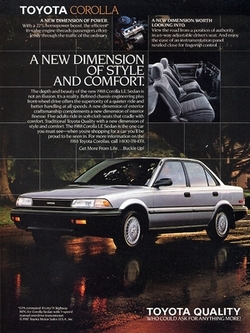 1988 Corolla AdvertisementThe car that would eventually become known as “Cosmo” was born in 1988. It was a powder blue Corolla, with a matching blue cloth interior—a decorative choice only the ‘80s could bless. My aunt, then in her mid twenties, bought the car with little knowledge it would eventually belong to her still unborn niece. She drove it for several years, before selling it my grandfather. My grandfather then sold it to my uncle, who at the time was a college student. He drove it for a decade or so, and once married, sold it back to my grandfather, who continued to drive it for another nine years. Upon getting my license, I searched for a car that was within my price range, as my parents had made it clear that if I wanted a car of my own, I would have to finance the endeavor myself. Unfortunately, I found no cars that I could insure, afford, and buy gas for. My dream was deferred for a year. The past summer however, on a college visit, my mom and I stopped at my grandparents’ house, and I noticed that, as my grandfather is somewhat of a car enthusiast, they had accumulated four cars.
1988 Corolla AdvertisementThe car that would eventually become known as “Cosmo” was born in 1988. It was a powder blue Corolla, with a matching blue cloth interior—a decorative choice only the ‘80s could bless. My aunt, then in her mid twenties, bought the car with little knowledge it would eventually belong to her still unborn niece. She drove it for several years, before selling it my grandfather. My grandfather then sold it to my uncle, who at the time was a college student. He drove it for a decade or so, and once married, sold it back to my grandfather, who continued to drive it for another nine years. Upon getting my license, I searched for a car that was within my price range, as my parents had made it clear that if I wanted a car of my own, I would have to finance the endeavor myself. Unfortunately, I found no cars that I could insure, afford, and buy gas for. My dream was deferred for a year. The past summer however, on a college visit, my mom and I stopped at my grandparents’ house, and I noticed that, as my grandfather is somewhat of a car enthusiast, they had accumulated four cars.
words + photos by Carolyn Handler Miller
Jews and Egypt. Two words that rarely meet in the same sentence. Unless you happen to be talking Bible talk and are retelling the story of Exodus, as we Jews do every spring during Passover. Or unless you are talking politics, and are discussing Egypt’s relationship with Israel. Or unless you possess a torn old photo like the one I have, plus a burning curiosity and the chance to travel to Egypt.
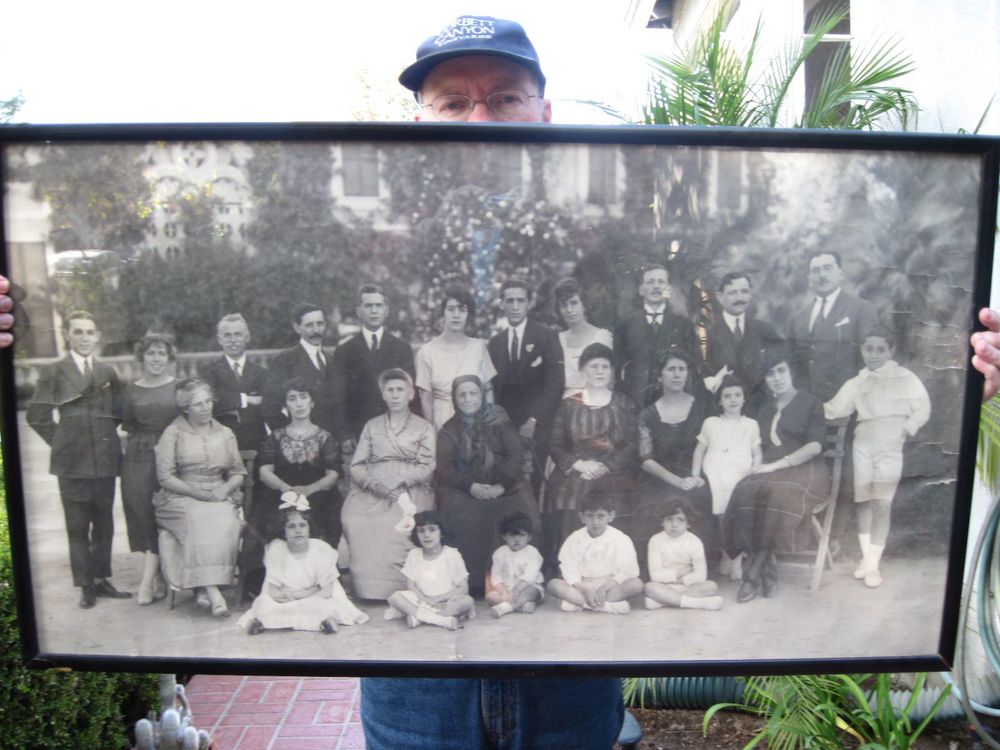 You see, the relationship between Jews and Egypt is a highly personal one for me, and one that the revolution in Egypt brought into sharp focus.
You see, the relationship between Jews and Egypt is a highly personal one for me, and one that the revolution in Egypt brought into sharp focus.
A large branch of my family once lived and thrived in Egypt until the 1950’s, when another Egyptian revolution, one barely remembered today, ultimately pushed Egyptian Jews into exile. In 1952, during that earlier revolution, King Farouk was forced to abdicate and soon after, Gamal Nasser took over the reins of government. Unlike the laid-back playboy king, Nasser was unfriendly to Jews. During the 1956 Suez Crisis, he declared them enemies of the state and Jews were no longer welcome in the country.
So the entire Egyptian branch of family fled to Paris. At that point, we, the American branch of the family, lost track of them. As far as we all knew, the story ended there.
And we might have forgotten all about them, except for this old black and white photo set in a broken wooden frame. It had been passed down from family member to family member and had finally fallen into my hands when none of my cousins showed any interest in it. Though they mocked the old-fashioned looking group, I found them fascinating. I longed to know more about them and their exotic life in Egypt.
The photo captures my Great Grandmother at a family reunion in Alexandria.
Vegas Soul
by Jules Older
People seem to think that Las Vegas has no soul. There are soulless towns, but Vegas isn't one of them.
For most, the soul of Vegas is probably the Strip, that ever-lengthening line-up of grand hotels, most of them heavily themed. From a Magic Kingdom look-alike to Manhattan Island to gay Paree, to an Arabian bazaar… by the time you finish reading this, there will be at least two more gone and three more — bigger and more sumptuous — replacing them.
by Judith Fein
There’s this organ in the middle of my chest that obliges me every second of every day by beating. It can be wounded, disarmed and stunned, but it keeps on doing its job. And it only asks me for one thing in return: “stay open,” it whispers. “Just stay open.”
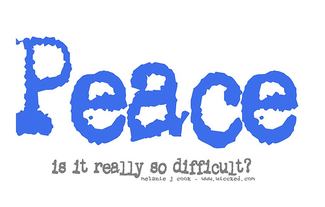 photo by wiccked via flickr common licenseMaybe at one point in time it was a real effort. I think I recall suspicions I harbored and some swirling fears. But, over the years, my heart does its job and I do mine. It beats, I stay open. Not all the time—because there are hurts that catch me off guard and cause me to recoil—but, as a rule, I stay exposed in life.
photo by wiccked via flickr common licenseMaybe at one point in time it was a real effort. I think I recall suspicions I harbored and some swirling fears. But, over the years, my heart does its job and I do mine. It beats, I stay open. Not all the time—because there are hurts that catch me off guard and cause me to recoil—but, as a rule, I stay exposed in life.
The risk, as you can imagine, is pain. The reward is pleasure, connection, and the ability to feel freely. I have weighed risk and reward and come down on the side of the latter.
My heart and I have traveled widely, and when someone asks me what my favorite country is I generally answer, “the last one I visited.” I am moved by the generosity, quirkiness and depth of the people I meet on the road. I love their cultures and customs and the unique way they navigate life.
Driving Myself Crazy Searching for the Ecological Solution
Since speaking on the cell phone is prohibited when you’re driving in Santa Fe, I pulled over to answer mine, which rang just before approaching Beaver Toyota. So, it was the most logical thing to drive into the parking lot of a large car dealership.
After getting off the phone, I was approached by a nice looking young salesman who asked if he could show me something. Without having any previous thought as to purchasing a vehicle, I responded by saying, “Only if you have a used hybrid that’s not a small car.” A small car would never fit my lifestyle. My modus operandi is to throw all kinds of stuff into my vehicle -- bags of compost, stacks of newspapers for recycling, and lots more.
words + photos by Janet Schneider
On a recent 20-mile bike ride along Torch Lake Drive in Northern Michigan, I expected to see beautiful views of what National Geographic has called “the third most beautiful lake in the world.” However, from the road, I saw very little of the lake. Most of the houses were also concealed from sight. Instead, I noticed the wooden signs sprouting at the end of driveways like mushrooms, or attached to mailboxes like antlers.
 These signs contained not only the homeowners’ but their properties’ names as well. Similar to the language found on boats, these often were terms of endearment or hopeful expressions of escape, fun and abandonment. While admiring these intricately decorated signs, I speculated about the inhabitants’ lake lives and recalled my own memories of lakeside cabin life.
These signs contained not only the homeowners’ but their properties’ names as well. Similar to the language found on boats, these often were terms of endearment or hopeful expressions of escape, fun and abandonment. While admiring these intricately decorated signs, I speculated about the inhabitants’ lake lives and recalled my own memories of lakeside cabin life.
From my bike height perspective, I was in the perfect position to focus on these owner-selected symbols of lake activity. It was clear from the choices made about their signs: shapes, materials, colors, font styles, and images, owners took tremendous pride in these homes. These signs were primarily made of wood, engraved with colorful scenes of lakes and their wildlife including birds such as loons, herons, or eagles. I cycled by painted images of natural settings with sand, plantings, the sky, and the sun. I slowed down at one memorable sign, an enlarged photograph of a golden sunset over a lake.
It is common for Southeast Michigan residents to own a cabin “Up North.” Many of these have been passed down and bring to mind happy inter-generational family memories. Families travel to these special places on weekends throughout the year and in the summer. They only differ by size, location (lake access the most treasured), and amenities such as a dock, deck, screened-in porch, or remodeled kitchen.
It was a perfect day for cycling – 70 degrees and overcast in late afternoon.
If I’d gotten a fortune cookie yesterday, it would have read: ‘Overconfidence brings misfortune.’ Or maybe, ‘Stay close to home today.’
Lacking such foresight, I was feeling cheerful about the two little flights – each less than 4 hours – that would take me from Florida to Arizona. This trip was trivial compared to the one from LAX to Melbourne: 16 hours in the air, which I do several times a year.
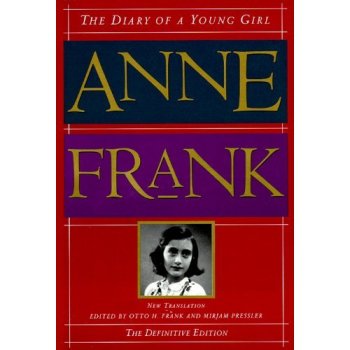 I barely even packed. In my carryon, I had just a computer, wallet, and paperback – Anne Frank’s Diary of A Young Girl, which I was reading for the first time.
I barely even packed. In my carryon, I had just a computer, wallet, and paperback – Anne Frank’s Diary of A Young Girl, which I was reading for the first time.
A friend dropped me at sweet little Sarasota/Bradenton airport exactly 90 minutes before my 1.34 p.m. flight. But at the Delta counter, I heard a staff member apologizing to another customer: our flight was delayed at least an hour.
Over the PA, an agent made the unsmiling declaration that that Atlanta airport was opening and closing all day, due to “weather,” and that if we made it there during a brief open period, we’d probably be spending the night there, not getting on to our final destinations. That, or we could go home and start again tomorrow.
I had booked a “calming facial” the next morning at the Royal Palms Spa, and I needed it. My pores were clogged from months in the sun, and relaxing in the hands of a competent, smooth-skinned aesthetician would make this trip worthwhile.
The flight to Atlanta kept being further delayed, in maddening, twenty-minute increments, which meant there wasn’t time to go to Starbucks or watch the soothing tropical fish display. We finally boarded about 3.30 p.m., and I strapped myself in and sat reading Anne Frank’s Diary. Having never read the book before, I’d assumed it would be horrifically depressing, but in fact her journal was amusing and the narrator almost incredibly cheerful, as in this observation shortly after her family went into hiding.
words + photos by Shannyn Sollitt*
Three weeks without electricity wasn't the hard part. It was the pig and chickens in the kitchen, and the family of chickens next to my bed making grumbling baby chicken sounds beneath their mother's wings every time I moved. It rains a lot at this time of year. They have to go somewhere indoors, and so does the pig that also made nocturnal grunting and farting sounds.
I maneuvered to set up my bed in their quadrant. I was grateful not to have to sleep with the workers, or in a hammock over the rest of the family, or on the floor with the fleas. When it is dark at 5:30 p.m. and the rooster crows at 3:30 a.m., it is a big deal where one spends that much time in oscuro. (Such a great Spanish word for darkness!).
I chose to sleep with the animals rather than people. I could pop on my headlamp in the middle of the night and converse with my best friend, write in my diary, and work on translating a beautiful piece on the People of the Sierra Nevada, written by a Swiss priest in Spanish. The book was a gift to Asdrubal's father, the Governor of the Arhuaco for the past 20 years.
The headlamp worked great until the moths started pecking at my eyes. I named the pig Wilbur in honor of Charlotte the spider. I developed deep compassion for him when people threw rocks because they didn't like where he was at the moment. He appreciated having his belly scratched. No one else was kind to him.
My decision to leave Asdrubal's farm ultimately became a question of clean water - well, clean in general.
A year ago, I met Belen Stoneman, a Native American from the Akimel O’otham of the Hohokum tribe. She was a spa therapist and resident “healer.” at the Sheraton Wild Horse Pass Resort & Spa in Chandler, Arizona, and happened to be at a spa event in New York. As I walked by, she stared at my beaded moccasin boots, which look as though they were made on a reservation, but are actually from New York. “I like your boots,” she smiled.
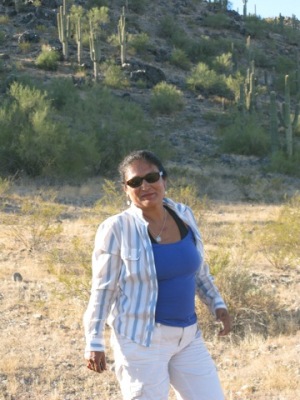
One of my college professors had told me I was psychic, a gift, he said, I should develop in a positive way. I hadn’t been aware of such a talent nor did I know to tap into it. Years later, a cigar-smoking Shaman on the Amazon River told me I had special powers. I almost believed him, until he told the next person in line exactly the same thing.
Belen indicated I should sit on a stool. How would she do the reading? Animal cards? Feathers? She picked up a pen and sheet of paper, closed her eyes, and moved the pen around the paper as if in a trance, drawing squiggly circles, star shapes, and curlicues. She opened her eyes, studied the design, and said, “I have a spiritual guide named White Cloud. He directs me and sends me messages. White Cloud says you can see things other people can’t. White Cloud says we played together as children.”
I felt a small tingle. Did that mean that in a former life – if there was such a thing – I was Native American? Is that why I always rooted for the Indians and not the cowboys?
“White Cloud says you are very comfortable in the mountains,” she continued.
“I love mountains,” I said.
“My people lived in the mountains, and the spirits of my ancestors still live there.”
by Bethany Ball
By my late twenties, I’d been unhappy with my body for a while. I had put on and dropped the same twenty pounds over and over again. Thin, I felt glamorous, but was in fact starving. My ideal weight was not one I could maintain. And heavy was something I was always fighting against. I needed to find a new journey to health and wellbeing.
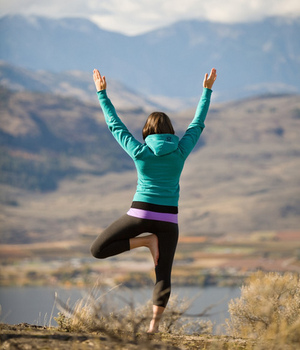 photo by lululemon athletica via flickr common licenseFor years I’d gone to the gym and it made me feel energized and strong. But it made my body bulky. My already naturally broad shoulders resembled those of a line backer. They’d bulked up after years of competitive swimming. My thighs were too heavy to fit in the narrow boot cut jeans, fashionable at the time. Boyfriends described me kindly as “athletic,” when I’d dreamed all my life of being lithe.
photo by lululemon athletica via flickr common licenseFor years I’d gone to the gym and it made me feel energized and strong. But it made my body bulky. My already naturally broad shoulders resembled those of a line backer. They’d bulked up after years of competitive swimming. My thighs were too heavy to fit in the narrow boot cut jeans, fashionable at the time. Boyfriends described me kindly as “athletic,” when I’d dreamed all my life of being lithe.
Working out made me feel powerful, but that feeling of power morphed into a feeling of being overly caffeinated. I would walk out of Crunch gym, after my regular work out, feeling twitchy and sometimes irritable. I used to call my work out my “Prozac” but, in fact, it didn’t relax me. I no longer felt powerful, I felt combative. Going to the gym made me hungry, sometimes ravenous. In college it was not unusual for me to whip up a batch of Pillsbury cinnamon rolls, eat them all, and then march over to the gym for a couple of hours. I would push my heart rate up to 110 percent, measuring it with two fingers on my wrist. I was “exerlimic” – binge eating and then exercising to the point of exhaustion.
Seeking advice, I emailed an old friend. I considered him a good source of basic wisdom, and he knew my body pretty well. I had been a photography model for him a couple of years before when I’d lived in Santa Fe, after college. Also, he wasn’t the type of guy who would brush off a very genuine comment like, “I hate my body and I don’t know what to do, since going to the gym isn’t working for me anymore.” He responded, “Why are you going to the gym all the time, anyway? Do you want to beat someone up?” He suggested I start doing yoga. “Some of the most beautiful people I know inside and out do yoga. You ought to give it a try.”
